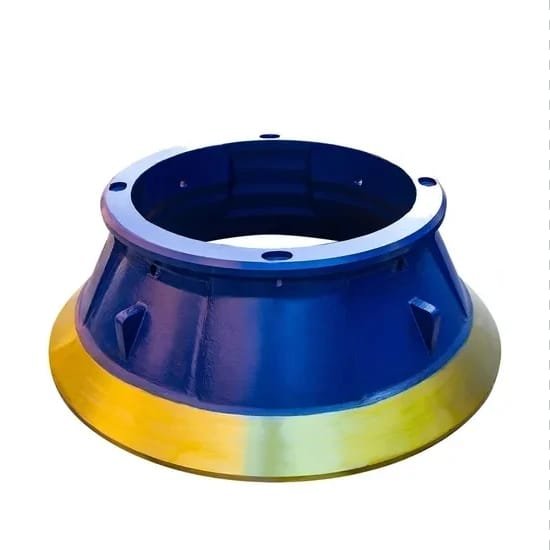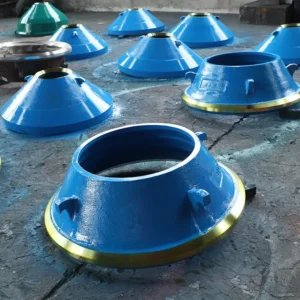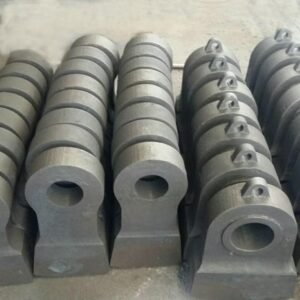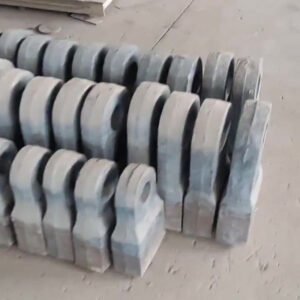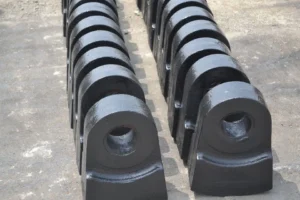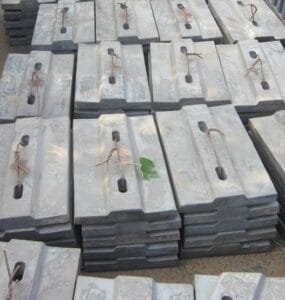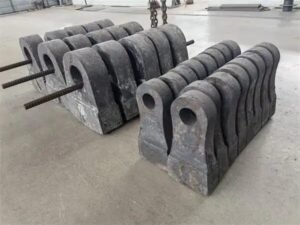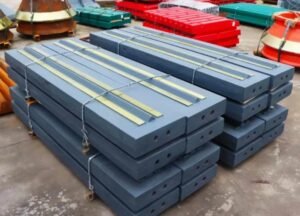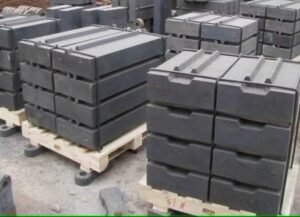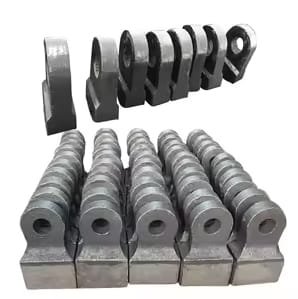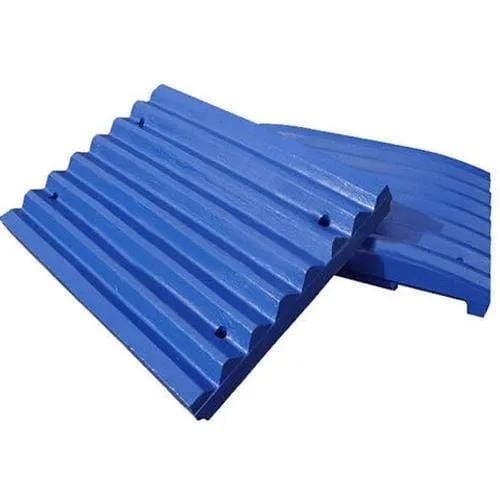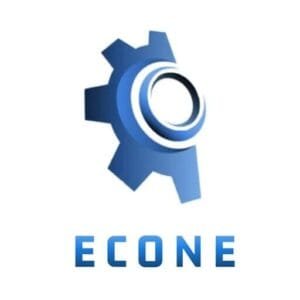Introduction
Cone crushers are essential in various industries, including mining, construction, and aggregates processing. The wear parts of a cone crusher play a crucial role in maintaining its efficiency, durability, and overall performance. Selecting the right wear parts can significantly impact operational costs, machine lifespan, and output quality. In this guide, we will cover everything you need to know before buying cone crusher wear parts, including types, materials, selection factors, maintenance, and where to purchase high-quality replacements.
Understanding Cone Crusher Wear Parts
Cone crusher wear parts are components that experience continuous impact and abrasion during the crushing process. These include:
Mantle: A moving component that crushes materials against the concave.
Bowl Liner (Concave): A stationary part that forms the crushing chamber.
Feed Cone: Directs material flow into the crushing chamber.
Torch Ring: Protects the main shaft from excessive wear.
Distributor Plate: Ensures even material distribution to reduce uneven wear.
Understanding these components is essential to choosing the right parts for optimal crusher performance.
Types of Cone Crusher Wear Parts Materials
Choosing the right material for your cone crusher wear parts significantly affects durability, efficiency, and cost. The most commonly used materials include:
1. Manganese Steel (Mn13, Mn18, Mn22)
Advantages: High toughness, excellent work-hardening properties, and resistance to impact.
Best For: Medium to hard rock applications where high impact resistance is needed.
2. Alloy Steel
Advantages: Enhanced wear resistance compared to standard manganese.
Best For: Applications requiring improved toughness with moderate impact resistance.
3. Tungsten Carbide Reinforced Parts
Advantages: Extremely high hardness and excellent wear resistance.
Best For: High-abrasion environments such as quartz and iron ore crushing.
4. Martensitic Steel
Advantages: Good balance between impact and wear resistance.
Best For: Secondary and tertiary crushing applications.
Understanding the differences between these materials helps in making an informed decision when purchasing replacement parts.
Key Factors to Consider Before Buying Cone Crusher Wear Parts
To maximize productivity and minimize costs, consider the following factors:
1. Compatibility with Your Crusher Model
Ensure that the wear parts match your crusher’s specifications. Using incorrect parts can reduce efficiency and lead to frequent breakdowns.
2. Rock Type and Application
Different rock types cause varying levels of wear. For example:
Hard rock (granite, basalt) requires high-manganese or tungsten carbide parts.
Softer materials (limestone, clay) can use standard manganese.
3. Wear Life and Cost Efficiency
Consider the total cost of ownership instead of just the initial purchase price. High-quality wear parts may have a higher upfront cost but last longer, reducing downtime and replacement expenses.
4. Supplier Reputation and Manufacturing Standards
Choose a supplier with a strong reputation, high manufacturing standards, and positive customer reviews. Verify certifications and quality control measures before purchasing.
5. Proper Fitment and Installation Support
Ill-fitting wear parts can lead to mechanical failures and reduced efficiency. Choose suppliers that offer installation guidance and after-sales support.
How to Maintain Cone Crusher Wear Parts for Extended Life
Proper maintenance ensures optimal performance and extends wear part lifespan. Follow these best practices:
1. Regular Inspections
Check wear parts for cracks, uneven wear, and material buildup.
Monitor the thickness of the wear parts and replace them before complete failure.
2. Optimize Crusher Settings
Adjust CSS (Closed Side Setting) and feed levels to prevent excessive wear.
Avoid overloading or underfeeding the crusher.
3. Use the Right Material for the Job
Match the wear parts’ material to the crushing application.
Consider upgrading to high-performance alloys for extreme conditions.
4. Proper Lubrication
Ensure bearings and moving parts are well-lubricated to reduce friction and overheating.
5. Training Operators on Best Practices
Educate machine operators on proper feeding techniques and equipment handling to reduce wear.
Where to Buy High-Quality Cone Crusher Wear Parts
When looking for a reliable supplier, consider the following:
1. OEM vs. Aftermarket Parts
OEM (Original Equipment Manufacturer) Parts: Designed specifically for your crusher model but often more expensive.
Aftermarket Parts: Cost-effective alternatives that can provide similar performance if sourced from a reputable supplier.
2. Trusted Suppliers and Manufacturers
Look for companies with:
Certifications such as ISO9001 for quality assurance.
Proven experience in wear part manufacturing.
Positive reviews and strong customer support.
3. Global vs. Local Suppliers
Global Suppliers: Provide advanced technology and competitive pricing.
Local Suppliers: Offer faster delivery times and better local support.
4. Customization Options
Some suppliers offer custom-made wear parts tailored to your specific crushing needs.
Conclusion
Choosing the right cone crusher wear parts is crucial for maximizing crusher efficiency, reducing downtime, and lowering operating costs. By considering material quality, crusher compatibility, application needs, and supplier reputation, you can make an informed decision and ensure long-term productivity.
For the best results, always buy from reputable manufacturers that provide durable, high-performance wear parts. Proper maintenance and regular inspections will further extend the lifespan of your crusher components, ensuring consistent output and cost savings over time.
